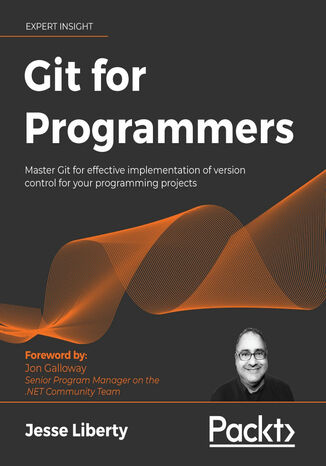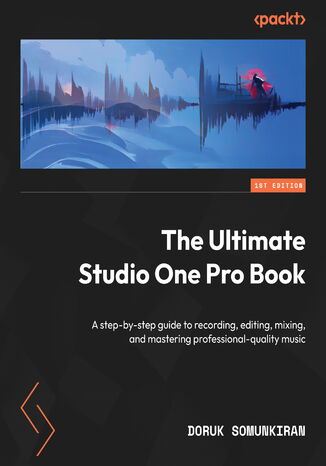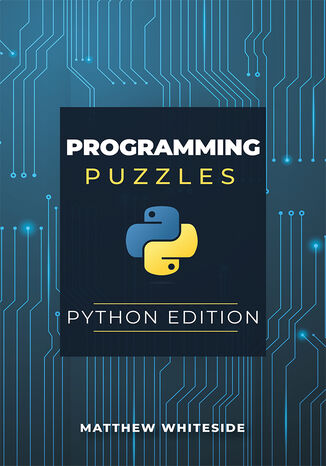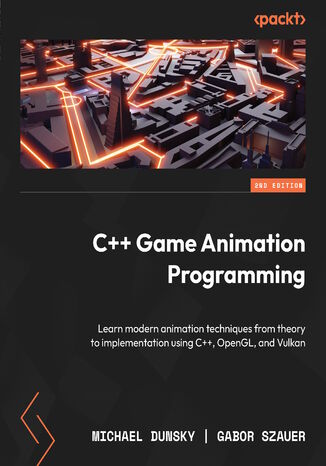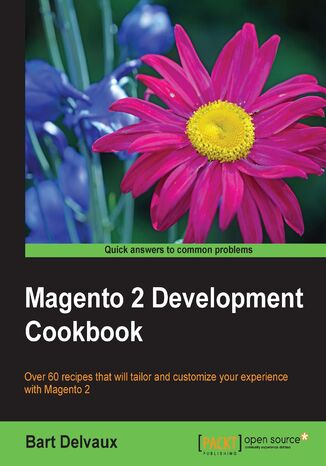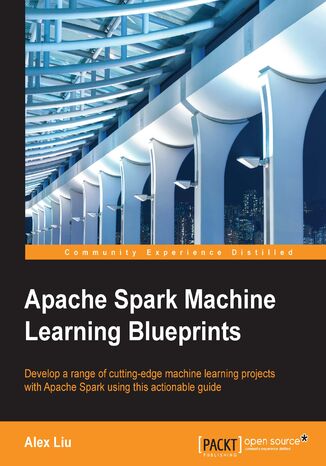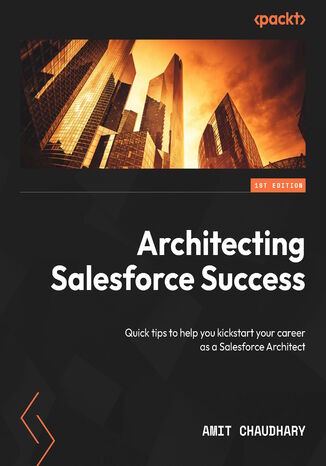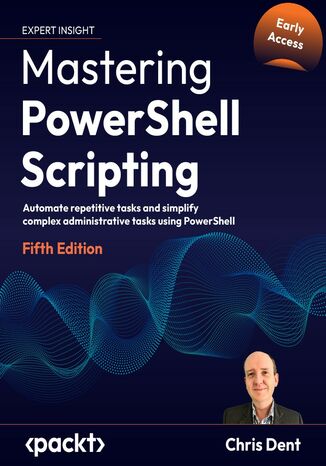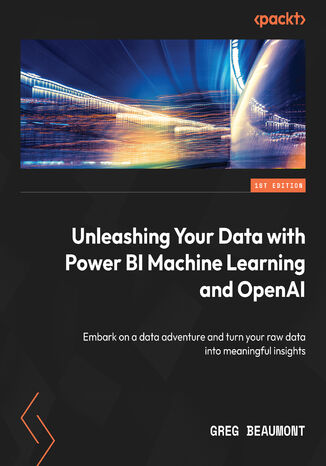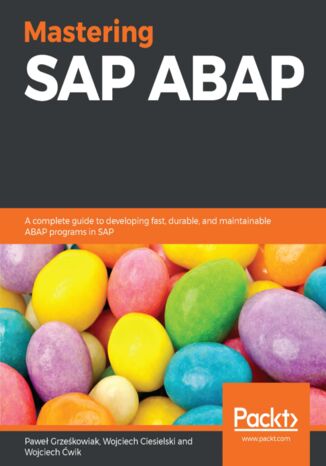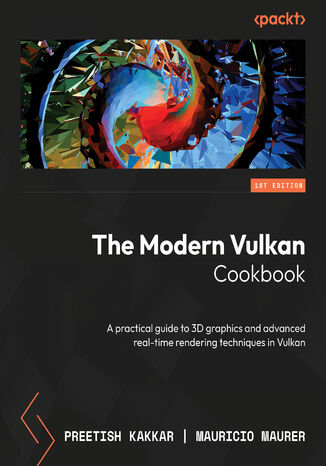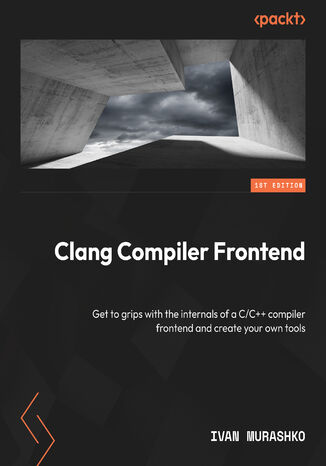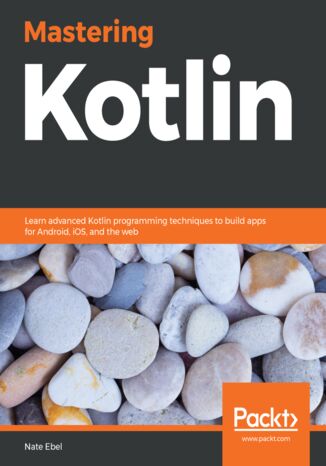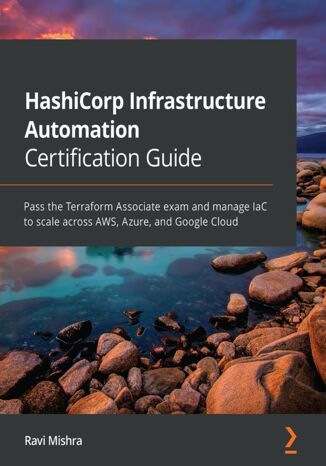Категорії
Електронні книги
-
Бізнес та економіка
- Біткойн
- Ділова жінка
- Коучинг
- Контроль
- Електронний бізнес
- Економіка
- Фінанси
- Фондова біржа та інвестиції
- Особисті компетенції
- Комп'ютер в офісі
- Комунікація та переговори
- Малий бізнес
- Маркетинг
- Мотивація
- Мультимедійне навчання
- Нерухомість
- Переконання та НЛП
- Податки
- Соціальна політика
- Порадники
- Презентації
- Лідерство
- Зв'язки з громадськістю
- Звіти, аналізи
- Секрет
- Соціальні засоби комунікації
- Продаж
- Стартап
- Ваша кар'єра
- Управління
- Управління проектами
- Людські ресурси (HR)
-
Для дітей
-
Для молоді
-
Освіта
-
Енциклопедії, словники
-
Електронна преса
- Architektura i wnętrza
- Безпека життєдіяльності
- Biznes i Ekonomia
- Будинок та сад
- Електронний бізнес
- Ekonomia i finanse
- Езотерика
- Фінанси
- Особисті фінанси
- Бізнес
- Фотографія
- Інформатика
- Відділ кадрів та оплата праці
- Для жінок
- Комп'ютери, Excel
- Бухгалтерія
- Культура та література
- Наукові та академічні
- Охорона навколишнього середовища
- Впливові
- Освіта
- Податки
- Подорожі
- Психологія
- Релігія
- Сільське господарство
- Ринок книг і преси
- Транспорт та спедиція
- Здоров'я та краса
-
Історія
-
Інформатика
- Офісні застосунки
- Бази даних
- Біоінформатика
- Бізнес ІТ
- CAD/CAM
- Digital Lifestyle
- DTP
- Електроніка
- Цифрова фотографія
- Комп'ютерна графіка
- Ігри
- Хакування
- Hardware
- IT w ekonomii
- Наукові пакети
- Шкільні підручники
- Основи комп'ютера
- Програмування
- Мобільне програмування
- Інтернет-сервери
- Комп'ютерні мережі
- Стартап
- Операційні системи
- Штучний інтелект
- Технологія для дітей
- Вебмайстерність
-
Інше
-
Іноземні мови
-
Культура та мистецтво
-
Шкільні читанки
-
Література
- Антології
- Балада
- Біографії та автобіографії
- Для дорослих
- Драми
- Журнали, щоденники, листи
- Епос, епопея
- Нарис
- Наукова фантастика та фантастика
- Фельєтони
- Художня література
- Гумор, сатира
- Інше
- Класичний
- Кримінальний роман
- Нехудожня література
- Художня література
- Mity i legendy
- Лауреати Нобелівської премії
- Новели
- Побутовий роман
- Okultyzm i magia
- Оповідання
- Спогади
- Подорожі
- Оповідна поезія
- Поезія
- Політика
- Науково-популярна
- Роман
- Історичний роман
- Проза
- Пригодницька
- Журналістика
- Роман-репортаж
- Romans i literatura obyczajowa
- Сенсація
- Трилер, жах
- Інтерв'ю та спогади
-
Природничі науки
-
Соціальні науки
-
Шкільні підручники
-
Науково-популярна та академічна
- Археологія
- Bibliotekoznawstwo
- Кінознавство / Теорія кіно
- Філологія
- Польська філологія
- Філософія
- Finanse i bankowość
- Географія
- Економіка
- Торгівля. Світова економіка
- Історія та археологія
- Історія мистецтва і архітектури
- Культурологія
- Мовознавство
- літературні студії
- Логістика
- Математика
- Ліки
- Гуманітарні науки
- Педагогіка
- Навчальні засоби
- Науково-популярна
- Інше
- Психологія
- Соціологія
- Театральні студії
- Богослов’я
- Економічні теорії та науки
- Transport i spedycja
- Фізичне виховання
- Zarządzanie i marketing
-
Порадники
-
Ігрові посібники
-
Професійні та спеціальні порадники
-
Юридична
- Безпека життєдіяльності
- Історія
- Дорожній кодекс. Водійські права
- Юридичні науки
- Охорона здоров'я
- Загальне, компендіум
- Академічні підручники
- Інше
- Закон про будівництво і житло
- Цивільне право
- Фінансове право
- Господарське право
- Господарське та комерційне право
- Кримінальний закон
- Кримінальне право. Кримінальні злочини. Кримінологія
- Міжнародне право
- Міжнародне та іноземне право
- Закон про охорону здоров'я
- Закон про освіту
- Податкове право
- Трудове право та законодавство про соціальне забезпечення
- Громадське, конституційне та адміністративне право
- Кодекс про шлюб і сім'ю
- Аграрне право
- Соціальне право, трудове право
- Законодавство Євросоюзу
- Промисловість
- Сільське господарство та захист навколишнього середовища
- Словники та енциклопедії
- Державні закупівлі
- Управління
-
Путівники та подорожі
- Африка
- Альбоми
- Південна Америка
- Центральна та Північна Америка
- Австралія, Нова Зеландія, Океанія
- Австрія
- Азії
- Балкани
- Близький Схід
- Болгарія
- Китай
- Хорватія
- Чеська Республіка
- Данія
- Єгипет
- Естонія
- Європа
- Франція
- Гори
- Греція
- Іспанія
- Нідерланди
- Ісландія
- Литва
- Латвія
- Mapy, Plany miast, Atlasy
- Мініпутівники
- Німеччина
- Норвегія
- Активні подорожі
- Польща
- Португалія
- Інше
- Przewodniki po hotelach i restauracjach
- Росія
- Румунія
- Словаччина
- Словенія
- Швейцарія
- Швеція
- Світ
- Туреччина
- Україна
- Угорщина
- Велика Британія
- Італія
-
Психологія
- Філософія життя
- Kompetencje psychospołeczne
- Міжособистісне спілкування
- Mindfulness
- Загальне
- Переконання та НЛП
- Академічна психологія
- Психологія душі та розуму
- Психологія праці
- Relacje i związki
- Батьківство та дитяча психологія
- Вирішення проблем
- Інтелектуальний розвиток
- Секрет
- Сексуальність
- Спокушання
- Зовнішній вигляд та імідж
- Філософія життя
-
Релігія
-
Спорт, фітнес, дієти
-
Техніка і механіка
Аудіокниги
-
Бізнес та економіка
- Біткойн
- Ділова жінка
- Коучинг
- Контроль
- Електронний бізнес
- Економіка
- Фінанси
- Фондова біржа та інвестиції
- Особисті компетенції
- Комунікація та переговори
- Малий бізнес
- Маркетинг
- Мотивація
- Нерухомість
- Переконання та НЛП
- Податки
- Соціальна політика
- Порадники
- Презентації
- Лідерство
- Зв'язки з громадськістю
- Секрет
- Соціальні засоби комунікації
- Продаж
- Стартап
- Ваша кар'єра
- Управління
- Управління проектами
- Людські ресурси (HR)
-
Для дітей
-
Для молоді
-
Освіта
-
Енциклопедії, словники
-
Електронна преса
-
Історія
-
Інформатика
-
Інше
-
Іноземні мови
-
Культура та мистецтво
-
Шкільні читанки
-
Література
- Антології
- Балада
- Біографії та автобіографії
- Для дорослих
- Драми
- Журнали, щоденники, листи
- Епос, епопея
- Нарис
- Наукова фантастика та фантастика
- Фельєтони
- Художня література
- Гумор, сатира
- Інше
- Класичний
- Кримінальний роман
- Нехудожня література
- Художня література
- Mity i legendy
- Лауреати Нобелівської премії
- Новели
- Побутовий роман
- Okultyzm i magia
- Оповідання
- Спогади
- Подорожі
- Поезія
- Політика
- Науково-популярна
- Роман
- Історичний роман
- Проза
- Пригодницька
- Журналістика
- Роман-репортаж
- Romans i literatura obyczajowa
- Сенсація
- Трилер, жах
- Інтерв'ю та спогади
-
Природничі науки
-
Соціальні науки
-
Науково-популярна та академічна
-
Порадники
-
Професійні та спеціальні порадники
-
Юридична
-
Путівники та подорожі
-
Психологія
- Філософія життя
- Міжособистісне спілкування
- Mindfulness
- Загальне
- Переконання та НЛП
- Академічна психологія
- Психологія душі та розуму
- Психологія праці
- Relacje i związki
- Батьківство та дитяча психологія
- Вирішення проблем
- Інтелектуальний розвиток
- Секрет
- Сексуальність
- Спокушання
- Зовнішній вигляд та імідж
- Філософія життя
-
Релігія
-
Спорт, фітнес, дієти
-
Техніка і механіка
Відеокурси
-
Бази даних
-
Big Data
-
Biznes, ekonomia i marketing
-
Кібербезпека
-
Data Science
-
DevOps
-
Для дітей
-
Електроніка
-
Графіка / Відео / CAX
-
Ігри
-
Microsoft Office
-
Інструменти розробки
-
Програмування
-
Особистісний розвиток
-
Комп'ютерні мережі
-
Операційні системи
-
Тестування програмного забезпечення
-
Мобільні пристрої
-
UX/UI
-
Веброзробка, Web development
-
Управління
Подкасти
Whether you’re looking for a book to deepen your understanding of Git or a refresher, this book is the ultimate guide to Git. Git for Programmers comprehensively equips you with actionable insights on advanced Git concepts in an engaging and straightforward way. As you progress through the chapters, you’ll gain expertise (and confidence) on Git with lots of practical use cases. After a quick refresher on git history and installation, you’ll dive straight into the creation and cloning of your repository. You’ll explore Git places, branching, and GUIs to get familiar with the fundamentals. Then you’ll learn how to handle merge conflicts, rebase, amend, interactive rebase, and use the log, as well as explore important Git commands for managing your repository.The troubleshooting part of this Git book will include detailed instructions on how to bisect, blame, and several other problem handling techniques that will complete your newly acquired Git arsenal.By the end of this book, you’ll be using Git with confidence. Saving, sharing, managing files as well as undoing mistakes and basically rewriting history will be a breeze.
The Ultimate Studio One Pro Book is a detailed, step-by-step guide to creating music with Studio One’s extensive set of production tools. This practical, goal-oriented resource will help musicians start producing their own music with Studio One and teach audio professionals how to include Studio One in their production workflow.The book begins by showing you how to set up Studio One to work smoothly on your system. The following chapters will walk you through the process of creating a project, along with recording audio and using virtual instruments to construct a MIDI arrangement. As you advance, you’ll find out how to edit your songs to perfection using Melodyne, Audio Bend, and an extensive collection of MIDI modifiers. You’ll also discover how to mix in Studio One with the effects plugins included in it, along with applying audio mastering in the Project window. Throughout this book, you’ll gain the skills needed to leverage Studio One confidently and effectively, as well as build your own unique music production workflow.By the end of this book, you’ll be able to effortlessly translate your musical ideas into complete songs using Studio One’s powerful tools.
Programming Puzzles is a meticulously crafted collection designed to elevate your coding skills through engaging and challenging exercises. The book begins with a helpful guide on getting started, ensuring that readers are well-prepared to tackle the puzzles ahead. As you delve deeper, you'll encounter a series of challenge puzzles that test your logical thinking and problem-solving abilities, followed by fun puzzles that offer a more relaxed yet equally rewarding experience.Hints are provided for the challenge puzzles to guide you through particularly tough spots, ensuring you stay motivated without giving away the solutions. Once you've worked through the puzzles, comprehensive solutions are provided, allowing you to understand different approaches and learn from your mistakes. Each section of the book is designed to progressively build your skills, from basic logic to advanced problem-solving techniques, making it an invaluable resource for anyone looking to improve their programming abilities.The journey through this book is not just about finding solutions; it's about developing a deeper understanding of how to approach and solve complex problems. By the end of this book, you'll have honed your coding skills, enhanced your logical thinking, and gained a new appreciation for the art of problem-solving in programming.
If you‘re fascinated by the complexities of animating video game characters and are curious about the transformation of model files into 3D avatars and NPCs that can explore virtual worlds, then this book is for you. In this new edition, you’ll find expanded content on high-performance graphics and modern animation techniques, along with improved workflows and enhanced guidance on using OpenGL and Vulkan. You’ll learn everything you need to know about game animation, from a simple graphical window to a large crowd of smoothly animated characters.First, you’ll learn how to use modern high-performance graphics, dig into the details of how virtual characters are stored, and load the models and animations into a minimalistic game-like application. Then, you’ll get an overview of the components of an animation system, how to play the animations and combine them, and how to blend from one animation into another. You’ll also get an introduction to topics that will make your programming life easier, such as debugging your code or stripping down the graphical output.By the end of this book, you’ll have gained deep insights into all the parts of game animation programming and how they work together, revealing the magic that brings life to the virtual worlds on your screen.
With the challenges of growing an online business, Magento 2 is an open source e-commerce platform with innumerable functionalities that gives you the freedom to make on-the-fly decisions. It allows you to customize multiple levels of security permissions and enhance the look and feel of your website, and thus gives you a personalized experience in promoting your business.
There's a reason why Apache Spark has become one of the most popular tools in Machine Learning – its ability to handle huge datasets at an impressive speed means you can be much more responsive to the data at your disposal. This book shows you Spark at its very best, demonstrating how to connect it with R and unlock maximum value not only from the tool but also from your data.Packed with a range of project blueprints that demonstrate some of the most interesting challenges that Spark can help you tackle, you'll find out how to use Spark notebooks and access, clean, and join different datasets before putting your knowledge into practice with some real-world projects, in which you will see how Spark Machine Learning can help you with everything from fraud detection to analyzing customer attrition. You'll also find out how to build a recommendation engine using Spark's parallel computing powers.
Salesforce stands as a leading cloud-based customer relationship management (CRM) platform with extensive support for businesses in managing their sales, marketing, customer service, and other critical activities. Becoming a Salesforce Architect opens doors to lucrative career opportunities in a thriving industry, given the high demand for skilled professionals.This guide offers expert insights and best practices for developers who want to ascend the Salesforce ladder, technical leads honing their prowess in Salesforce, and enthusiasts exploring the dynamic world of Salesforce architecture. Whether you’re seeking a roadmap to success as a Salesforce Architect or want to enhance your skills, this concise yet insightful report ensures your growth in the vibrant Salesforce community.This guide will help you change your mindset from developer to architect, highlighting key considerations when designing a solution for clients. By the end of this book, you’ll have gained a comprehensive understanding of the role of a Salesforce Architect and the prerequisites and essential soft skills necessary for success within the Salesforce ecosystem.
Mastering PowerShell Scripting, Fifth Edition, is your comprehensive guide to harnessing PowerShell’s full potential. This edition introduces new chapters on debugging, troubleshooting, and creating GUIs while covering the latest enhancements in PowerShell 7.3, including parameters, objects, and .NET classes.The book takes you from foundational concepts to advanced techniques, covering asynchronous processing, desired state configuration, and managing large datasets. You'll explore PowerShell’s automation features, error-handling strategies, and integration with external services. Additionally, this guide provides practical insights into working with regular expressions, Windows Management Instrumentation, and complex scripting methods.By the end of this book, you’ll have the skills to efficiently automate tasks, troubleshoot scripts, and leverage PowerShell’s advanced capabilities for real-world scenarios.
Getting Started with MariaDB. Explore the powerful features of MariaDB with practical examples
MariaDB is a database that has become very popular in the few short years that it has been around. It does not require a big server or expensive support contract. It is also powerful enough to be the database of choice for some of the biggest and most popular websites in the world, taking full advantage of the latest computing hardware available.From installing and configuring through basic usage and maintenance, each chapter in this revised and expanded guide leads on sequentially and logically from the one before it, introducing topics in their natural order so you learn what you need, when you need it. The book is based on the latest release of MariaDB and covers all the latest features and functions. By the end of this beginner-friendly book, not only will you have a running installation of MariaDB, but you will have practical, hands-on experience in the basics of how to install, configure, administer, use, and maintain it.
Microsoft Power BI is the ultimate solution for businesses looking to make data-driven decisions and unlock the full potential of their data. Unleashing Your Data with Power BI Machine Learning and OpenAI is designed for data scientists and BI professionals seeking to improve their existing solutions and workloads using AI. The book explains the intricacies of the subject by using a workshop-style data story for data ingestion, data modeling, analytics, and predictive analytics with Power BI machine learning. Along the way, you’ll learn about AI features, AI visuals, R/Python integration, and OpenAI integration. The workshop-style content allows you to practice all your learnings in real-life challenges and gain hands-on experience. Additionally, you’ll gain an understanding of AI/ML, step by step, with replicable examples and references. From enhancing data visualizations to building SaaS Power BI ML models, and integrating Azure OpenAI, this book will help you unlock new capabilities in Power BI.By the end of this book, you’ll be well-equipped to build ML models in Power BI, plan projects for both BI and ML, understand R/Python visuals with Power BI, and introduce OpenAI to enhance your analytics solutions.
Pawe?Ç Grze?okowiak, Wojciech Ciesielski, Wojciech fÜwik
Advanced Business Application Programming (ABAP) is an established and complex programming language in the IT industry. This book is designed to help you use the latest ABAP techniques and apply legacy constructions using practical examples.You'll start with a quick refresher on language and database concepts, followed by agile techniques for adding custom code to a modern ABAP system. After this, you will get up to speed with the complete ABAP toolset for importing data to and from different environments. Next, you'll learn how to print forms and work with the different ABAP tools for Extensible Markup Language (XML) manipulation. While covering further chapters, you'll gain insights into building stunning UI5 interfaces, in addition to learning how to develop simple apps using the Business Object Processing Framework (BOPF). You will also pick up the technique of handling exceptions and performing testing in ABAP. In the concluding chapters, you can look forward to grasping various techniques for optimizing the performance of programs using a variety of performance analysis tools.By the end of this book, you will have the expertise you need to confidently build maintainable programs in Systems, Applications, and Products (SAP).
Preetish Kakkar, Mauricio Maurer
Vulkan is a graphics API that gives the program total control of the GPU, allowing the GPU to be used to its full potential. This cookbook will uncover useful techniques for emerging new technologies, such as hybrid rendering, extended reality – mixed reality (MR), augmented reality (AR), virtual reality (VR) – and GPU-driven rendering, and even features a dedicated chapter to help you debug and profile your graphics applications with tips and tricks tested in real-world scenarios.The book starts by explaining basic Vulkan concepts while guiding you through the implementation of a basic graphics engine. The building blocks presented in the first few chapters will then help you implement more advanced techniques and algorithms, while getting you acquainted with the inner workings of Vulkan. Gradually, you’ll discover how Vulkan can be used to build hybrid renderers as well as leveraged for the future of graphics with AR/VR/MR. Moreover, you’ll gain an understanding of how it can be debugged or measured for performance.By the end of this book, you’ll be well versed in how to use Vulkan to write graphics applications and how graphics algorithms are implemented using Vulkan.
Discover the power of Clang, a versatile compiler known for its compilation speed and insightful error and warning messages. This book will get you acquainted with the capabilities of Clang, helping you harness its features for performance improvements and modularity by creating custom compiler tools.While focused on Clang compiler frontend, this book also covers other parts of LLVM, essential to understanding Clang's functionality, to keep up with the constantly evolving LLVM project.Starting with LLVM fundamentals, from installation procedures to development tools, this book walks you through Clang's internal architecture and its integral role within LLVM. As you progress, you’ll also tackle optimizing compilation performance through features such as C++ modules and header maps.The later chapters cover tools developed using the Clang/LLVM, including clang-tidy for linting, refactoring tools, and IDE support, and feature many examples to illustrate the material.By the end of this book, you’ll have a solid understanding of Clang, different Clang Tools, and how to use them to their fullest potential.
Using Kotlin without taking advantage of its power and interoperability is like owning a sports car and never taking it out of the garage. While documentation and introductory resources can help you learn the basics of Kotlin, the fact that it’s a new language means that there are limited learning resources and code bases available in comparison to Java and other established languages.This Kotlin book will show you how to leverage software designs and concepts that have made Java the most dominant enterprise programming language. You’ll understand how Kotlin is a modern approach to object-oriented programming (OOP). This book will take you through the vast array of features that Kotlin provides over other languages. These features include seamless interoperability with Java, efficient syntax, built-in functional programming constructs, and support for creating your own DSL. Finally, you will gain an understanding of implementing practical design patterns and best practices to help you master the Kotlin language.By the end of the book, you'll have obtained an advanced understanding of Kotlin in order to be able to build production-grade applications.
Hemang Doshi, Javen Khoo Ai Wee
Following on from the success of its bestselling predecessor, this third edition of the CISA - Certified Information Systems Auditor Study Guide serves as your go-to resource for acing the CISA exam. Written by renowned CISA expert Hemang Doshi, this guide equips you with practical skills and in-depth knowledge to excel in information systems auditing, setting the foundation for a thriving career.Fully updated to align with the 28th edition of the CISA Official Review Manual, this guide covers the latest exam objectives and provides a deep dive into essential IT auditing areas, including IT governance, systems development, and asset protection. The book follows a structured, three-step approach to solidify your understanding. First, it breaks down the fundamentals with clear, concise explanations. Then, it highlights critical exam-focused points to ensure you concentrate on key areas. Finally, it challenges you with self-assessment questions that reflect the exam format, helping you assess your knowledge.Additionally, you’ll gain access to online resources, including mock exams, interactive flashcards, and invaluable exam tips, ensuring you’re fully prepared for the exam with unlimited practice opportunities.By the end of this guide, you’ll be ready to pass the CISA exam with confidence and advance your career in auditing.
Terraform is a highly sought-after technology for orchestrating infrastructure provisioning. This book is a complete reference guide to enhancing your infrastructure automation skills, offering up-to-date coverage of the HashiCorp infrastructure automation certification exam. This book is written in a clear and practical way with self-assessment questions and mock exams that will help you from a HashiCorp infrastructure automation certification exam perspective. This book covers end-to-end activities with Terraform, such as installation, writing its configuration file, Terraform modules, backend configurations, data sources, and infrastructure provisioning. You'll also get to grips with complex enterprise infrastructures and discover how to create thousands of resources with a single click. As you advance, you'll get a clear understanding of maintaining infrastructure as code (IaC) in Repo/GitHub, along with learning how to create, modify, and remove infrastructure resources as and when needed. Finally, you'll learn about Terraform Cloud and Enterprise and their enhanced features.By the end of this book, you'll have a handy, up-to-date desktop reference guide along with everything you need to pass the HashiCorp Certified: Terraform Associate exam with confidence.

